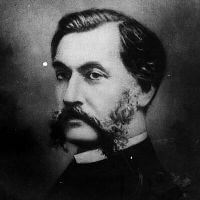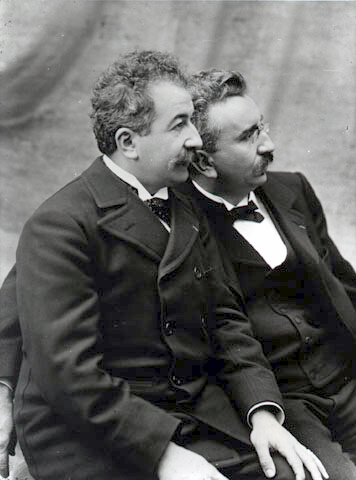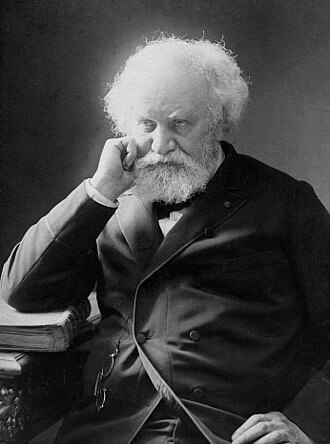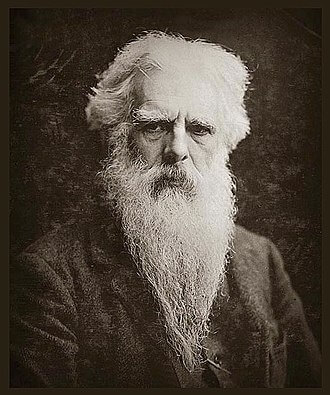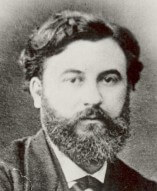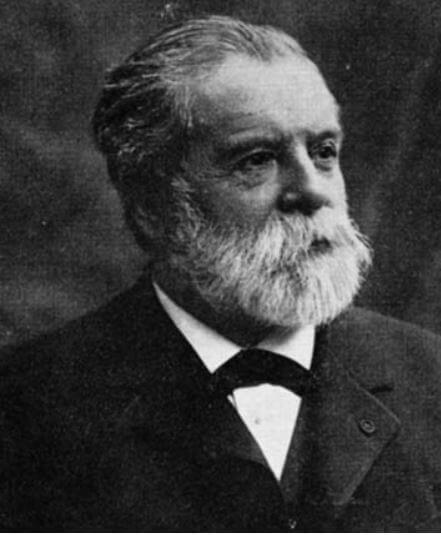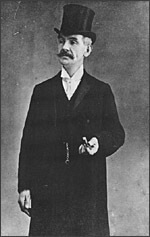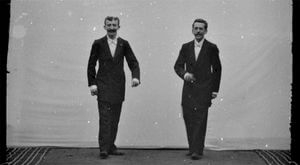The Birth of Cinema, 1874-1895
0In the process of compiling the playlist of films, The Birth of Cinema, 1874-1895, I have given much thought to what should be or should not be included. Some may object to the inclusion of the work of Janssen, Muybridge, Reynaud and Marey, claiming that films began when Louis Le Prince invented a camera that could photograph a succession of images on a continuous strip from a single lens, which eventually became the main type of camera used for filmmaking until the development of video and digital cameras. Using the logic behind the assertion that Le Prince made the first films owing to the device used to create them, one would be forced to conclude that video and digital productions are not films. The term “film” itself is not ideal to describe what was originally known as a motion picture and what I prefer to call moving images. Motion-picture film is one of several mediums on which images may be recorded in succession which, when played back, creates moving images. What difference does it make how those images were captured and reproduced as long as the end result is a moving image? A movie camera after all is just a device invented for capturing a series of still images just as Muybridge and Marey did with their multiple cameras and chronophotographic guns. So my working definition of a film is a series of images which when viewed in sequence create the illusion of movement. I realize not everyone will agree with that definition and that there is no consensus among film scholars as to when cinema began but as another example of why I feel that the movie camera-related definition is too restrictive, consider the work of Charles-Émile Reynaud who hand-painted images on a transparent tape with no camera involved and the work of Stan Brakhage who did the same thing on photographic movie film several decades later. If their works are not cinema then what are they?
The YouTube playlist contains 86 films and runs for about 30 minutes. Cock Fight, no.2 cannot be included due to YouTube’s content guidelines but may be viewed on Odnoklassniki. I have only included a few works by Muybridge, who made over 100,000 films and only a few made by Marey and his assistants at the Station Physiologique. As most of their films were made for scientific purposes I think most viewers would find it rather tedious to watch all of their available work from this period. In the titles on the films in the playlist I have noted the names of the studios or producers involved with the films. They are not necessarily also the filmmakers. The films are in chronological order either by the date they were exhibited (if known) or made. Films for which only the year of exhibition or production are known will appear in alphabetical order along with the other films also in that category. There are no non-contemporary title cards or logos nor is there any music (except for Dickson’s experimental sound film). I suggest watching it full-screen so that the complete title, date, and production company information is visible.
Chronology
1874: Pierre Janssen invents the Revolver astronomique. The creation of a device to record moving images was originally conceived of for scientific, not entertainment purposes:
In the mid-nineteenth century, one of the scientific challenges of the moment was to determine with the greatest accuracy possible the distance between the Earth and the Sun, the so-called Astronomical Unit, which indicates the size of our Solar System. At that time, the only way to know it was through the astronomical phenomenon of Venus transit: the passage of Venus ahead of the Sun, which required two simultaneous observations being made at a time from different land latitudes and measure the total duration of the event. With this data and applying the laws of Kepler, which describe the behavior of planetary orbits, the distance with the rest of the planets of the Solar System could be obtained.
But the method had two drawbacks: the frequency of the phenomenon and the technical problem of getting the start and end of the transit. The Venus transit in 1874 was a unique opportunity, which was why more than sixty coordinated expeditions of up to ten different countries were organized for different locations in China, Vietnam, New Caledonia, some Pacific islands and Japan. The distortion caused by the terrestrial atmosphere, the diffraction of the telescopes, the subjectivity of the observer and the “black drop effect” (an optical effect that distorts the silhouette of Venus just in the instant that enters and leaves the solar disk) supposed a huge technical problem that no device had been able to solve until then.
It was after this situation, that Janssen created his revolver, the device that would eliminate the subjectivity of the process. Once it was created, he tested the device with the support of the French government in Nagasaki (Japan).
As the exact moment in which the transit of Venus would take place was impossible to predict, he added a watch set to create a sequence of images. The revolver recorded 48 photographs in 72 seconds in a daguerreotype, material that was no longer used but was ideal for the sunlight that was presented in the situation, since it could capture the light in a great time of exposure and obtain clearer results.
The British expeditions photographed the transit from different geographic points using apparatuses inspired by the revolver of Janssen. Unfortunately, the quality of the resulting images of the two expeditions was not sufficient to accurately calculate the Astronomical Unit, and the observations were more reliable at eye. Even so, Janssen introduced his revolver to the Société Francaise de Photographie in 1875 and the Académie des Sciences in 1876, to which he suggested the possibility of using his apparatus for the study of the animal movement, especially of the birds, because of the rapidity of the movement of their wings.”
1878: “In June, Eadweard Muybridge created sequential series of photographs with a battery of 12 cameras along the race track at Leland Stanford’s Palo Alto Stock Farm in California (now the campus of Stanford University). The shutters were automatically triggered when the wheel of a cart or the breast or legs of a horse tripped wires connected to an electromagnetic circuit. For a session on 15 June 1878, the press and a selection of turfmen were invited to witness the process. An accident with a snapping strap was captured on the negatives and shown to the attendees, convincing even the most skeptical witnesses. The news of this success was reported worldwide.”
1878: Charles-Émile Reynaud makes Le Singe musicien. This is one of several films made for the praxinoscope, invented by Reynaud in 1877. Like the zoetrope, it used a strip of pictures placed around the inner surface of a spinning cylinder. The praxinoscope improved on the zoetrope by replacing its narrow viewing slits with an inner circle of mirrors, placed so that the reflections of the pictures appeared more or less stationary in position as the wheel turned. Someone looking in the mirrors would therefore see a rapid succession of images producing the illusion of motion, with a brighter and less distorted picture than the zoetrope offered.
1887-1888: Louis Le Prince films Man Walking Around a Corner, Accordion Player, Roundhay Garden Scene, and Traffic Crossing Leads Bridge. Man Walking Around a Corner was shot with a 16 lens camera and the images weren’t captured on a continuous strip of film like the others.
Motion pictures are seemingly easy to define, but when faced with questions of the firsts in their invention, the once simple and intuitive definition becomes muddled. After all, people of the 19th Century were accustomed to such optical toys, such as the Zoetrope, that when rotated presented the illusion of moving images. The projection of animated drawings precedes that of animated photography, introduced as early as the 1840s by Leopold Ludwig Döbler and in the 1850s by Franz von Unchatius. Émile Reynaud took the projected animation further with his Théâtre Optique–patented in 1888–with elaborate animation drawn onto a film-like material and screened commercially from 1892 to 1900. As early as 1879, Eadweard Muybridge used his Zoopraxiscope projector for drawings based on his chronophotography. Ottomar Anschütz reproduced photographic motion on discs for the public beginning in 1887. Étienne-Jules Marey had invented cameras using paper and celluloid roll films in the same period as Louis Le Prince, i.e. from 1888-1890. Others, like Georges Demenÿ, Woodsworth Donisthorpe, William Friese-Greene, and William K.L. Dickson were also working on the invention of motion pictures around the same time.
Le Prince began experimenting with motion pictures in the 1880s, and by 1886, he applied for patents on a movie camera and projector. At first, he and his assistants–who included James William Longley, Fredrick Mason and his son, Adolphe–concentrated on the misguided notion of a multiple-lens camera and projector, but on 14 October 1888, Le Prince was able to take a series of photographs on sensitized paper film with a one-lens camera. According to Christopher Rawlence, Le Prince first photographed Accordion Player and then Roundhay Garden Scene. They were photographed at about 12 frames per second, which it is now known, is rather slow for the illusion of movement. Le Prince photographed Traffic Crossing Leeds Bridge at about 20 frames per second, which is a more appropriate speed for motion pictures. Most say it was filmed only a couple weeks after the Roundhay films, but Rawlence suggests it wasn’t until the summer of 1889.
These are some of the earliest motion pictures ever made, if not the very first. Yet, Le Prince was far from perfecting (or even making functional) his projector: the deliverer of the films. The only outside witness to Le Prince’s experiments in film projection was the Secretary of the Paris Opéra, who witnessed the working of one of Le Prince’s projectors for the purpose of authorizing his French patent. That was on 30 March 1890. He was planning to demonstrate motion pictures to the American public when he mysteriously disappeared–last seen on 16 September 1890.”
– Cineanalyst IMDb
1888: Ottomar Anschütz films Pferd und Reiter Springen über ein Hindernis. “Ottomar Anschütz is an interesting and largely forgotten figure in the history of chronophotography and the invention of movies. Unlike the better-known chronophotographers Eadweard Muybridge and Étienne-Jules Marey, whose concerns were artistic and scientific, respectively, Anschütz mainly photographed serial images with the intent to reproduce their motion for public entertainment and to do so on an industrial scale, which today’s authority on Anschütz, Deac Rossell, has made clear in various writings. In this regard, Anschütz’s career shared more with those of Thomas Edison and the Lumière brothers. As Friedrich Tietjen has pointed out, however, the loop mode for the synthesis of Anschütz’s images, as well as Muybridge’s, demanded and created different experiences than celluloid films. Horses, as with Muybridge and Marey, were a popular subject for Anschütz. All three men’s enthusiasm for horses was also borne of scientific inquiry: training for sport in the case of Muybridge, physiological analysis for Marey, and military training for Anschütz. Two of his surviving series are from his Hanover work of military riders on horses jumping over obstacles. Three other remaining series available on the web and elsewhere are of athletic feats. Contemporaries remarked on the superior quality of his dry-plate images compared to the work of Muybirdge and Marey.”
– Cineanalyst IMDb
1888, 29 October: Étienne-Jules Marey presents a film to the Academy des Sciences. “Marey invented in 1882 a chronophotographic fixed plate camera, equipped with a timed shutter. Using this, he succeeded in combining on a single plate several successive images of a single movement. In 1888 Marey improved his invention by replacing the glass plate with a long strip of sensitized paper. The first ‘film’ on paper, taken at 20 images a second, was shown (but not projected) at the Academy des Sciences on 29 October 1888.”
– Who’s Who of Victorian Cinema
1890: William Carr Crofts & Wordsworth Donisthorp film London’s Trafalgar Square.
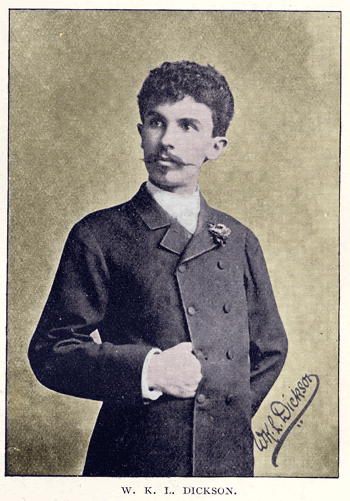 1890, November: William K.L. Dickson working at the Edison laboratory films three Monkeyshines, using a sheet of film wrapped around a cylinder. –Wikipedia
1890, November: William K.L. Dickson working at the Edison laboratory films three Monkeyshines, using a sheet of film wrapped around a cylinder. –Wikipedia
1891: William Friese-Greene films Traffic in King’s Road Chelsea. See Peter Domankiewicz’s site William Friese-Greene & Me for his in-depth research on this film and Friese-Greene.
1891, 20 May: Edison shows a group of his wife’s friends, members of the Federation of Women’s Clubs, the first film made by Dickson on a strip of film now known as Dickson Greeting. – Wikipedia
1892, 3 March: Georges Demenÿ, one of Marey’s closest associates, “files a patent for the Phonoscope, an apparatus for glass discs (42 cm diameter) with a series of chronophotographic images on their circumference which could be projected using a powerful Molteni lantern. After the Phonoscope was successfully presented at the Exposition Internationale de Photographie de Paris (1892), Demenÿ dreamed of commercializing chronophotography, and pushed Marey to order the manufacture of six cameras intended for sale. Relations between them soured when Demenÿ formed, in December 1892, the Société de Phonoscope. Marey refused to co-operate in this enterprise, so Demenÿ devised his own camera, inventing the ‘beater’ mechanism – used in many later projectors – to move the film. In 1894 Demenÿ was dismissed from the Station Physiologique. He installed himself at Levallois-Perret, rue Chaptal, and made about a hundred very diverse Phonoscope scenes: Danseuse de French-Cancan, Premiers pas de Bébé, and Passage du Train,” none of which appear to have survived. – Laurent Mannoni Who’s Who of Victorian Cinema
1892, 28 October: Reynaud premieres his Pantomimes Lumineuses in Paris. “The Théâtre Optique (Optical Theatre) is an animated moving picture system invented by Émile Reynaud and patented in 1888. From 28 October 1892 to March 1900 Reynaud gave over 12,800 shows to a total of over 500,000 visitors at the Musée Grévin in Paris. His Pantomimes Lumineuses series of animated films include Pauvre Pierrot and Autour d’une cabine. –Wikipedia
1894, 14 April: The first kinetoscope (peephole viewer) parlor opens in New York featuring the Edison films Sandow, Barber Shop, Blacksmithing Scene and seven others. – Wikipedia
1895: Birt Acres and Robert W. Paul make their first film known as Crude Set Drama. “Paul’s involvement with cinematography came about by chance, when he was asked to make replicas of Edison’s Kinetoscope, a peepshow device for viewing 35 mm films by transmitted light, which had not been patented in England. Having agreed to manufacture the machines for his clients, Greek entrepreneurs Georgiades and Tragides, he then decided to make others for himself. The only films available were controlled by the Edison company and so in order for Paul’s Kinetoscope business to succeed, it was essential that he make his own films. With only the Kinetoscope machine and its films to go on, Paul, with the assistance of a professional photographer, Birt Acres, designed and manufactured a cinematograph camera, now known as the Paul-Acres Camera. By 29 March 1895, the first successful English film had been shot, showing Paul’s friend Henry Short outside Clovelly Cottage, Barnet, the home of Birt Acres.”
– Who’s Who of Victorian Cinema
1895, 22 March: Lumière brothers screen Sortie d’usine for the Société d’Encouragement pour l’Industrie nationale. First known projection on a screen before a large audience.
1895, 20 May: Woodville Latham screens boxing films for a paying audience in New York.
1895, 1 November: The Skladanowsky brothers screen films for a paying audience at the Wintergarten in Berlin. By this time Edison had ceased film production due to declining sales of the kinetoscope. Production would resume in 1896 with the arrival of projection. “Born 30 April 1863 in Berlin, the son of a glazier who was later a small manufacturer, Max Skladanowsky is one of the genuine inventors of motion pictures whose extravagant claims in the 1920s and 1930s obscured his real accomplishments. He was first apprenticed in photography, then glass painting, and finally in optics at the Hagedorn workshops, manufacturers of theatrical lighting and apparatus, including magic lanterns. In 1879 he went on tour with his father, Carl, and older brother Emil (b. 1859) giving dissolving magic lantern shows; between 1881 and 1890 the family presented magic lantern, water fountain and mechanical theatre shows throughout Germany and central Europe. In 1890 Max and Emil constructed a mobile mechanical theatre which toured Germany during 1891 and Vienna, Budapest and Scandinavia in 1892. That same year Max constructed with Emil a chronophotographic camera designed for unperforated Kodak roll film and using a worm-gear intermittent movement, with which he shot his first film footage, forty-eight frames of Emil, on 20 August. By mid-summer 1895 Max had developed the Bioskop projector, a device derived from dissolving magic lantern practice using two loops of film 54 mm wide, with two lenses and electrical arc lamps and a worm-gear intermittent that projected alternate frames from each band so that it achieved the sixteen frames per second needed to reconstitute full motion. The Bioskop was seen in a demonstration at the Gasthaus Sello in the Pankow suburb of Berlin in July 1895 by Julius Baron and Franz Dorn, directors of the Wintergarten Theatre in Berlin, and they immediately contracted for a public exhibition at their theatre beginning 1 November 1895, also the date of the Skladanowsky’s patent for his intermittent movement.” – Who’s Who of Victorian Cinema
1895, 28 December: The famous Lumière brothers first screening before a paying audience at the Salon Indien du Grand Café in Paris. All the films on the program had previously been exhibited for non-paying audiences.
I would like to thank Cineanalyst for the permission to include sections of his well-informed reviews along with film historians Alison McMahan, Dr. Robert J. Kiss and especially David Bond for helping me formulate my ideas on this subject.
The Birth of Cinema, 1874-1895 Playlist
Next article in this series: The Year 1896 in Film.

